The Toronto Maple Leafs penalty kill was one of the main talking points after an 0-for-2 outing against the Vancouver Canucks on Saturday night.
Some of it seems to be stemming from a bit of recency bias following a 4-for-7 week killing penalties in which two goals were scored off of the rush, including one where Jake Virtanen scored from near to the goal line.
On the whole, the penalty kill ranks a middling 18th this season. Looking into it and reviewing the goals they’ve conceded, it stands out that they rank 28th in shorthanded save percentage at 81.52 percent. In high danger save percentage, the Leafs rank 20th.
In corsi against per 60, Toronto has the second-best rating, and they are the fourth-best in expected goals against per 60. This generally lines up with what we see on the ice – Ilya Mikheyev, Zach Hyman, and Mitch Marner are all very good penalty killers. They are fast, instinctive, and often win the key battles to get pucks out. They apply pressure all the way up the ice and can even create the odd offensive opportunity. Alex Kerfoot chips in as well with his speed. Those are the Leafs’ top four penalty-killing forwards according to ice time.
The Leafs haven’t scored a goal shorthanded yet, but they have the second-highest corsi for per 60 in the league when down a man. This group can terrorize teams with their speed, even if they haven’t made an opposing power play truly pay yet.
On defense, the Leafs lean on Jake Muzzin and Justin Holl as well as TJ Brodie and Zach Bogosian. Other than Holl (who has 106 NHL games to his name), this is an experienced group that is not prone to fundamental breakdowns.
Are there things they can work on, though? Of course.
One area where did get caught this week — twice — is a neutral zone trap in a 2-2 formation instead of a safer 1-3.
That was right before the Brock Boeser goal. This next shot is right before the Jake Virtanen goal in the game before:
There is a lot of room along the walls here for the opposing power play to break in cleanly. It’s true the Leafs should have gotten a save on the Virtanen goal, but it was still a relatively easy, clean zone entry, which is the last thing you want to give up while penalty killing. The goal is to make the opposition dump the puck in by strongly holding the defensive blue line.
A few weeks ago against Calgary, the Leafs gave up two power-play goals in a 3-0 loss. Both goals were the result of shots with traffic followed by Calgary pouncing on rebounds/tips, but the Flames also had two really good chances off of the rush where they slipped right through the Leafs’ forecheck.
We’ve seen the Leafs poke pucks off attackers and create 2v1s the other way, but the odds of an Alex Kerfoot – Ilya Mikheyev 2v1 rush scoring are probably less than the odds of a power-play unit full of top-end talent either getting a chance off of the rush or setting up for a full power play.
If the Leafs are close together in a 2-2 neutral zone formation of sorts, it allows teams to accomplish what they generally are hoping to accomplish: skating through the middle of the ice with the puck and flipping it to the wall to a streaking forward, who can curl and set up or take it right to the net.
The Toronto penalty kill could stand to be a little less aggressive with two forwards; one should suffice considering the speed the Leafs have to burn. They also need to get a few more saves. Needless to say, it won’t really matter what the penalty killers are doing if they don’t get more of those.
Notes
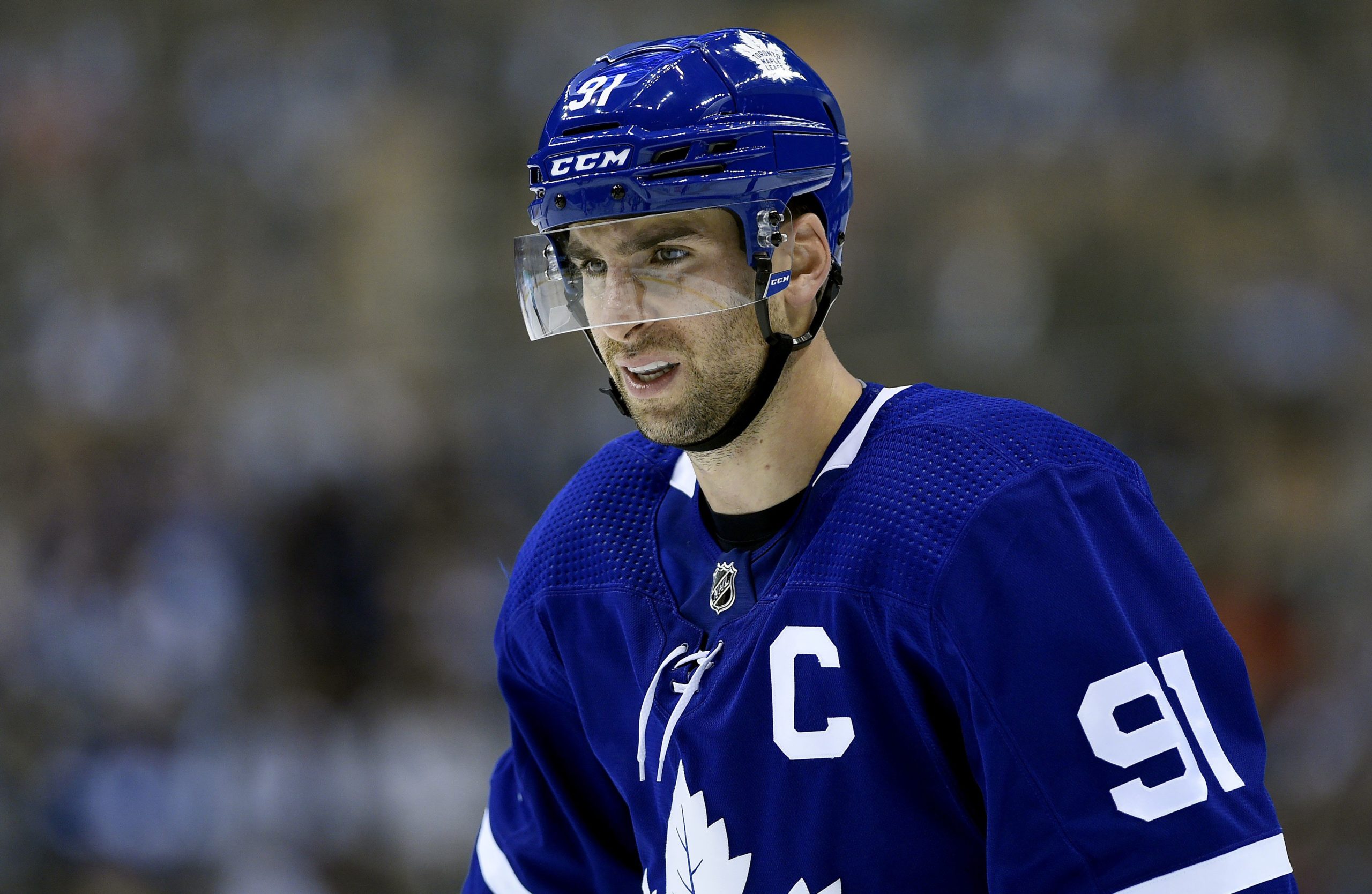
– I went back and watched every John Tavares goal as a Leaf in his first two seasons to see how many times he scored using a half slap shot. There was a memorable one against the Islanders. He also sort of used it against the Minnesota Wild once. And maybe you could squint and say he used it against Philly once, too, though this one is admittedly questionable.
The point being: He beat a good goalie who is hot right now in Thatcher Demko completely clean off of the rush using this deceptive shot. The goal against the Islanders looks almost identical. It’s a nice little weapon in his bag of tricks – he should probably use it more often.
– In general, Tavares’ shot rates are down this season. He’s putting up 2.81 shots on net per game at the moment, which is a decent number in general, but it would mark the first time since his rookie season that he didn’t average at least 3.08 shots per game (and even then, that was his sophomore season). This would also mark his lowest goals per game output since his rookie season. Tavares has produced 22 points in 26 games — the production is still there. It should be noted that he’s also averaging his lowest time on ice per game since his rookie season, too.
– As someone who pays attention to the starts of periods quite a bit, it was interesting that the Leafs began each period on Saturday with their third line of Ilya Mikheyev, Pierre Engvall, and Zach Hyman. It’s probably a bit of a reward for how well they’ve played lately. It’s also a nod to the value of establishing a forecheck and momentum at the beginning of each period.
– Amid his hot start, it was almost a little lost in the shuffle that Joe Thornton only played 10 games (in which he did have 10 points). In the four games since, he has just the one point and played a season-low 11:57 against Vancouver. The game was the second half of a back-to-back and the third in four nights for the Leafs. It’s understandable that at age 41, Thornton’s TOI dropped off in the final game of that set. In both games, Zach Hyman ended up moving up the lineup, which also makes sense.
How could they manage this in the playoffs, though? You basically play every other night. If the Leafs start winning rounds, that means roughly 15+ games in 30+ nights if they were to get to the Finals? That depends on the length of the series, of course, but the point stands: It’s a grind.
It’s fine when the schedule involves a bunch of matchups versus Ottawa or when the team is hot against Edmonton, but it is a real question and concern as the games tighten up. With Thornton having played little more than half the games this season, it’s understandable that they didn’t think they should rest him for the back-to-back, but we’ll see if that approach changes moving forward.
Does it make sense to have a player on your top line if he isn’t going to play that much when the workload increases with a tight schedule? We’ll see how they manage this now that the first 10-game hot streak is up and reality is setting in a bit more. It’s fine to move Hyman up, but then the third line gets notably worse as well, and Keefe can’t trot them out the same way as he would if Hyman was there leading the charge. There are a few factors to consider here.
– In the three-game series against Edmonton, William Nylander played just 13:51, 13:25, and 14:28. Against Vancouver, where they were down most of the first game and a decent chunk of the second game (about a period’s worth), he played 16:59 and 16:45 — still not a ton of ice time.
We’ve been noting his ice time throughout the season in this space. At times, it has been understandable, but he was on a bit of a heater with a run of five goals in four games going into the Vancouver series. While he was held pointless against the Canucks, he put 11 shots on net in those two games and was consistently dangerous. It wasn’t like he was doing nothing out there.
Nylander is firmly fifth among Leafs forward in even-strength time on ice per game at 13:48 per game. Tavares is fourth at 15:33. Joe Thornton is sixth at 13:11. Among all forwards across the league to have played at least 10 games, his even-strength time on ice per game is tied for 117th. It’s out of top-line range and in top-six range, but it seems low, on the whole, considering the production has been there of late.
– Conversely, Auston Matthews is second in the league among forwards in even-strength time on ice per game. Only Patrick Kane is averaging more. Mitch Marner is fifth, as only the aforementioned Kane, Matthews, Mark Scheifele, and Connor McDavid play more. He’s looked a little off since returning – potentially uncomfortable due to the injury – but he has played 18:43, 23:22, and 21:27. That’s not exactly easing him back in, even though the team as a whole was hot and playing well.
– Travis Dermott barely played in the first game against Vancouver (only 11:32); he let his man go in front of the net who then scored the 3-1 Vancouver goal (Dermott played only one shift afterward). He seems to be first in line to move into the top four in the event of an absence, but beyond that, Dermott plays no special teams and limited minutes on the whole.
All four defensemen in the Leafs’ top four are signed through the end of next season, and it kind of feels like a shoe has to drop here at some point before then.
– Earlier this season, Connor McDavid split Justin Holl and Jake Muzzin for a highlight-reel goal. This time, Holl stepped up to cut off the split move and McDavid completely burned him wide. Some players are simply amazing and there’s not much you can do about it. It’s pick-your-poison, basically.
Connor McDavid go brrrrr pic.twitter.com/arqvoJ7n1R
— Dimitri Filipovic (@DimFilipovic) March 2, 2021
Quotes
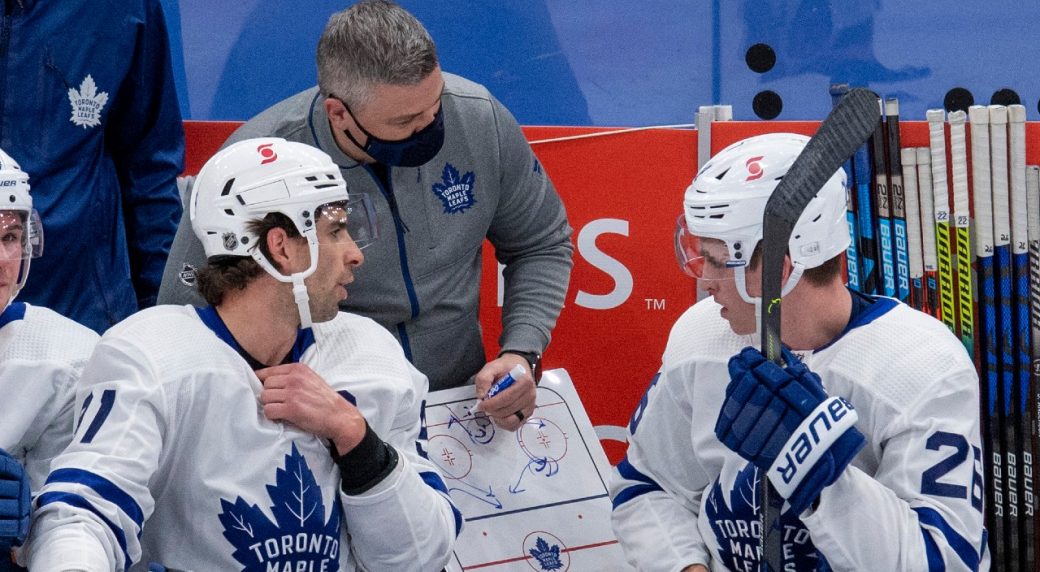
“A lot of that stuff is somewhat overblown, because if you really watch the game, players move around and replace each other a fair bit, probably more so than ever in today’s game. It’s a little more fluid than you’re accustomed to.”
– Sheldon Keefe on which wing sides (left or right) William Nylander and Alex Kerfoot would be playing while paired together
To some degree, Keefe has a point — in the offensive zone, the forwards go wherever they want. On the defensive side of things, though, after the initial backcheck, I hardly remember many times where William Nylander was breaking out on the left side or Alex Kerfoot was breaking out on the right side.
That’s where it actually matters. I couldn’t care less where a player is in the offensive zone, but breaking out and picking the puck up off the wall on the backhand or forehand is a noteworthy factor. It can then impact the side of the ice the players are on off of the rush, which also makes a difference.
“It’s been solid. But I think we’ve been defending too much. I think we need to be cleaner with our breakouts and with our exits and we’ve done a good job defending, I think we’ve just done it too much.”
– Jake Muzzin on team defense
I thought this was an interesting quote from Jake Muzzin, one that falls in line with the Leafs currently sitting 23rd in team corsi and 20th in team fenwick. What he’s saying is true, although it should be noted the Leafs have spent more time leading than any other team in the league this season. They’ll largely get away with it in this division, but they should be better at 5v5. They can’t just bank on shooting the lights out (they now lead the league in 5v5 PDO).
“I want to feel good enough to play and feel like I can contribute and play my game, but not hinder my ability long-term and throughout the season, because we’re playing for more than the regular season.”
– Auston Matthews on returning to play
Basically everyone couldn’t help but notice that he returned and played the bumper role on the power play instead of the half-wall. There’s something to be said for mixing it up on the power play, and there’s also something to be said for playing if you aren’t going to further aggravate the injury. It might have just been that his timing was off — he did look better on Saturday — but he didn’t truly seem like himself. Hopefully, he just needed to get his legs back underneath him.
Tweets of the Week
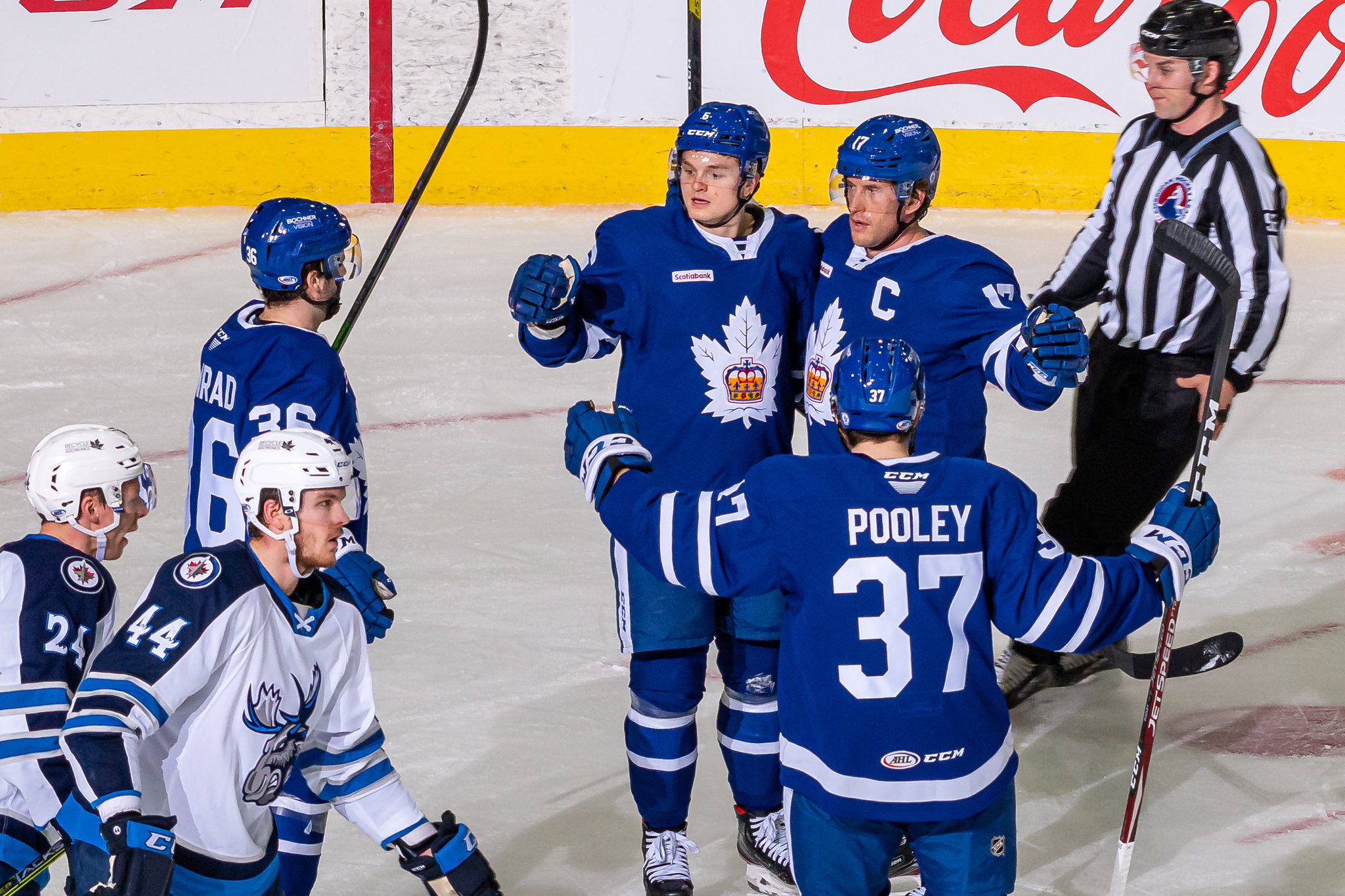
The Leafs (mostly without Matthews) completely shutting down McDavid and sweeping the Oilers for three straight then dropping the next two to the Canucks without Petterson is the most predictable thing in the universe.
— Steve “Dangle” Glynn (@Steve_Dangle) March 7, 2021
After the first game against Edmonton, having been a Leafs fan my whole life, I naturally defaulted to feeling like they would lose the second game and the third one. Of course, that didn’t happen — they actually played quite well, while winning all three games fairly easily.
After losing to Vancouver on the third game in four nights, of course they would correct it with the redemption game, right? Nope.
It felt all too Leafy in the end. Going 3-2 in this five-game set is kind of sobering considering how well they were playing in the first half of the road trip.
Most deserving distinction for a person whose leadership contributions can be felt daily throughout the entire Leafs Organization. Very well earned & congratulations, @richclune … we are extremely fortunate to have you. https://t.co/qOXcYNXOk1
— Kyle Dubas (@kyledubas) March 1, 2021
Kudos to Rich Clune. I couldn’t think of a more deserving person on and off the ice. He’s a great example and leader for the Marlies to learn from, and he’ll do a great job of keeping players accountable as they learn/progress in pro hockey.
“There’s no relationship like a father and son.” – Wayne Gretzky
As long as there is hockey, Walter’s story will be told. Stephen Brunt remembers Canada’s favourite hockey dad. pic.twitter.com/fhkv1YemyV
— Sportsnet (@Sportsnet) March 5, 2021
Anyone who has been lucky enough to go to a Leafs game over the past few decades has probably come across Walter Gretzky. If you’ve been in some of the arenas in the GTA over the years, you’ve probably come across Walt at one point or another. Seemingly everyone has a story with/about him. What it speaks to more than anything else is how kind of a human being he was and how giving he was with his time. He gave you his full attention. He was genuinely interested in what you had to say and who you were as a person.
5 Things I Think I’d Do
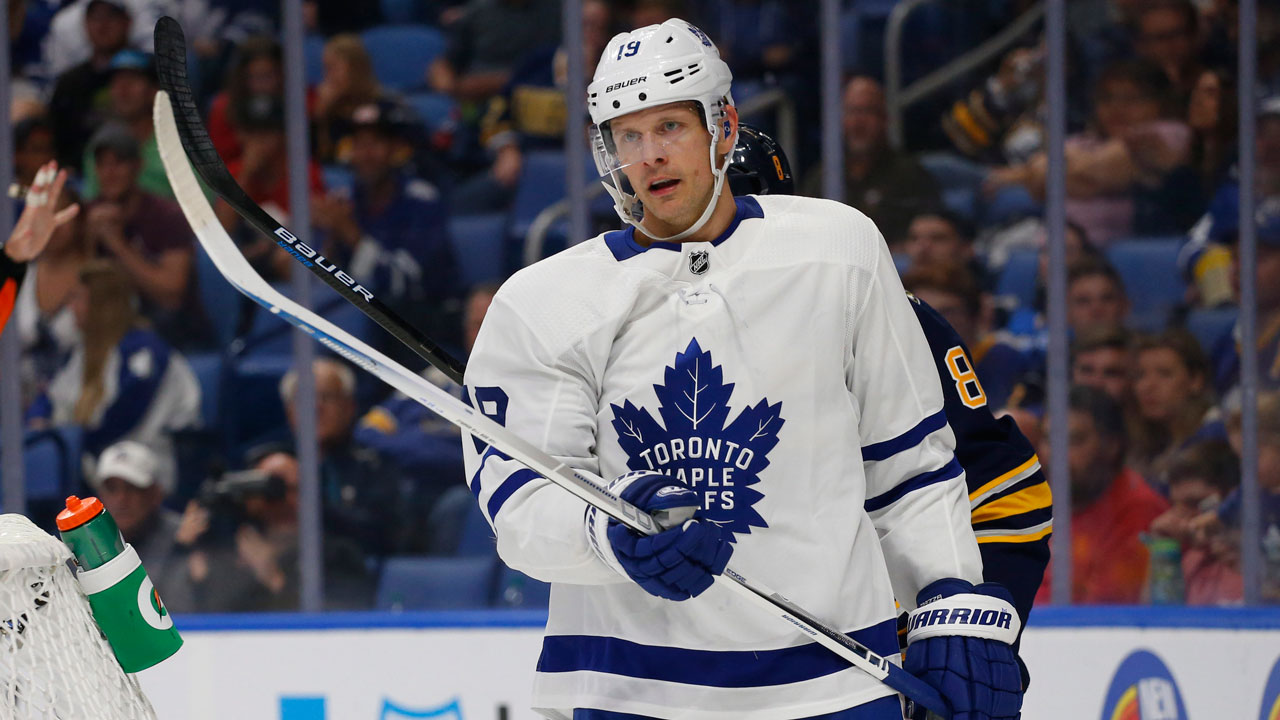
1. About a month away from the trade deadline (April 12), I think it’s not entirely clear quite yet what the team’s position of need is. We do know that the Leafs should be looking to upgrade the roster (most likely at forward), but we’re maybe not totally sure as to where.
That’s where the next few weeks come into play. If the team is dead set on keeping the Ilya Mikheyev – Pierre Engvall – Zach Hyman line together — with Hyman moving up as necessary — then Alex Kerfoot and Joe Thornton would start each night in the top six in the playoffs. It would make sense to upgrade there. If they ultimately decide the team is better with Hyman in the top six, perhaps Kerfoot moves down to the third line, but that line loses a bit of its lustre, so to speak, with that swap.
Ultimately, if Kyle Dubas can find a swiss-army-knife type who can do a bit of everything, I think that would be best unless there’s a player that’s simply too good to pass up. A few years ago, the Bruins traded for Charlie Coyle at the deadline — that is the kind of player that comes to mind as someone who can center a line, play wing, move up the lineup, or carry a lesser line on his own. Coyle scored nine goals and 16 points in 24 games in that playoff run.
2. I think it should be noted that after the trade deadline (which includes the game that night against Montreal), the Leafs have just 15 games remaining on their schedule. Eight of those games take place over the would-be two-week quarantine period.
The Leafs have been early buyers before —the Jake Muzzin and Jack Campbell trades come to mind — and they should be again. Last year, it was reported the Leafs called off their pursuit of Zach Bogosian after the David Ayers fiasco — that was understandable — but the message this year should be much different. If the Leafs are going to part with significant assets, I’d guess that Dubas will look for a player with term on his deal. That has been his MO.
3. When Wayne Simmonds returns, I think the Leafs will have an interesting lineup decision on their hands. The one with the least impact on the overall line combinations would be to swap him for Travis Boyd and move Jason Spezza to center on the fourth line. Simmonds can also play on the power play instead of Boyd (Boyd is getting some PP1 time right now).
However, if the coaching staff isn’t convinced of Spezza at center — and the evidence shows they aren’t — it gets a tad more interesting. Jimmy Vesey is a bit of a whipping boy in the market, but the coaching staff likes him on the penalty kill and they have been vocal about that. If he comes out, who will take those penalty-killing minutes? Pierre Engvall?
Seemingly nobody else would come out for Simmonds, but they could entertain resting Thornton and Spezza a bit more. I’d probably start with sitting Boyd and moving Spezza over to center. They could also look at pushing Engvall to 4C and Kerfoot to 3C while moving around some of the other pieces.
4. I think it was interesting to see the team trail in a few games in Vancouver. We haven’t had an opportunity to evaluate them in that kind of situation very often so far. The first thing that stood out was the ice time of Jason Spezza, who has 16 points in 25 games this season. He played 15:20 the first game against Vancouver — a season-high that made sense given they were down for most of that game. In the second game, he played only 10:22.
I don’t think he’ll truly sustain his current points pace, but he’s going right now. If they are losing or even tied for that matter, he’s probably in the top-nine forward group for this team — whether that’s over Alex Kerfoot, or at times Ilya Mikheyev considering his scoring touch (or lack thereof), or even Joe Thornton depending on how he is looking. When the Leafs don’t have the lead and are in need of goals, Spezza should play more than that.
5. I think I’d get Mikko Lehtonen back into a game at some point this week. The fact that he can come in and quarterback the second power-play unit is useful and also reduces TJ Brodie’s minutes a tad. He’s only played nine games so far (and has three assists), but his shot is a legitimate weapon, and he hasn’t really done much to suggest he can’t play in the league. I’d be inclined to look for ways to get him into the lineup unless he starts to definitively prove he can’t play here.


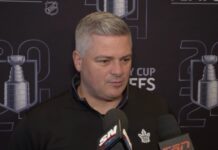

![Sheldon Keefe Post Game, Leafs 3 vs. Bruins 2: “I loved [the Matthews] line, and I loved a lot about our game all the way through the lineup” Sheldon Keefe, Toronto Maple Leafs post game](https://mapleleafshotstove.com/wp-content/uploads/2024/04/keefe-pg-game-1-218x150.jpg)




















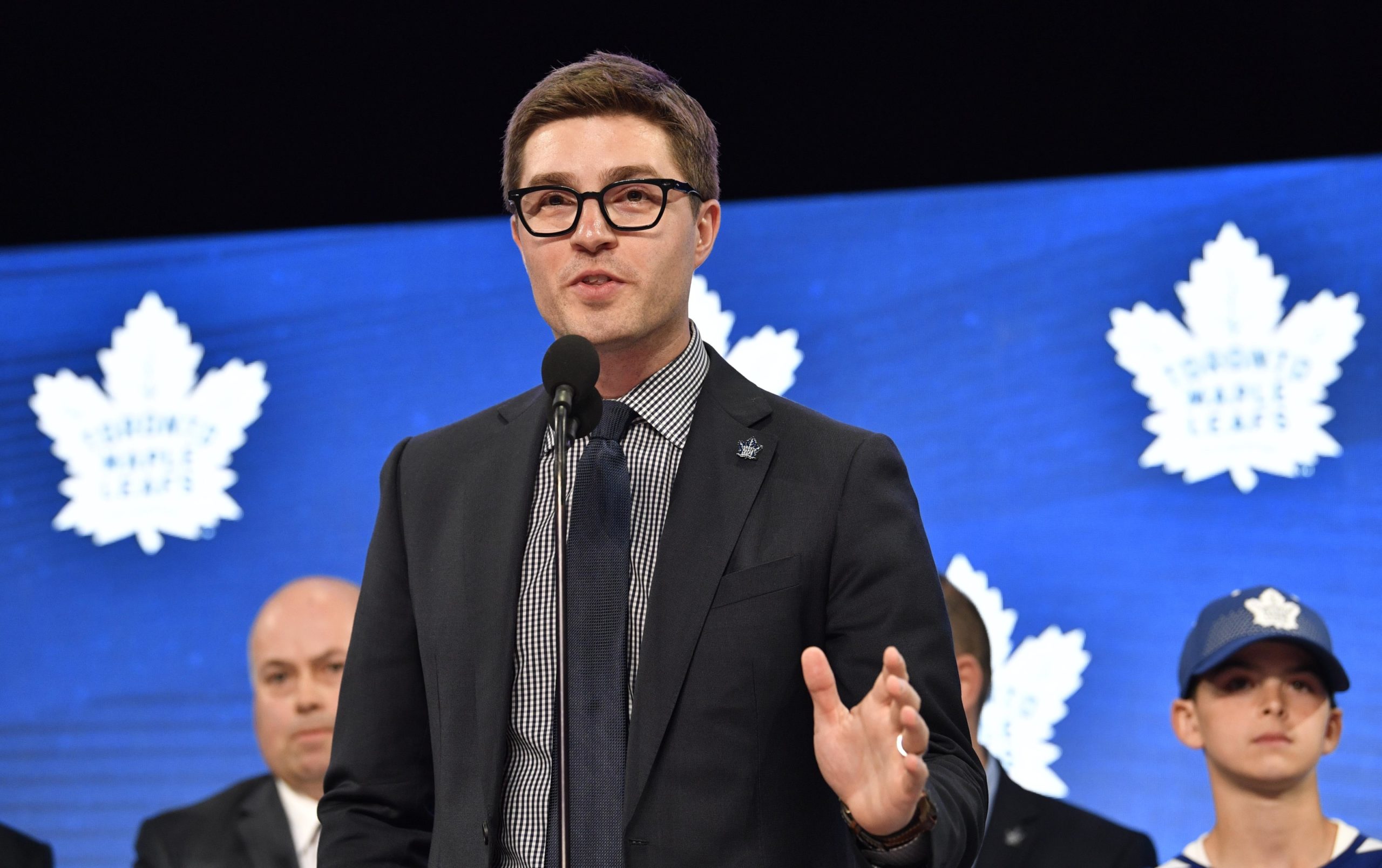


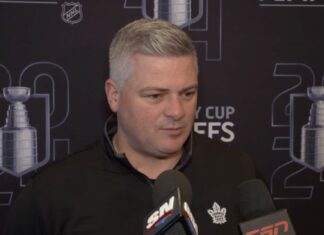




![Sheldon Keefe Post Game, Leafs 3 vs. Bruins 2: “I loved [the Matthews] line, and I loved a lot about our game all the way through the lineup” Sheldon Keefe, Toronto Maple Leafs post game](https://mapleleafshotstove.com/wp-content/uploads/2024/04/keefe-pg-game-1-100x70.jpg)



